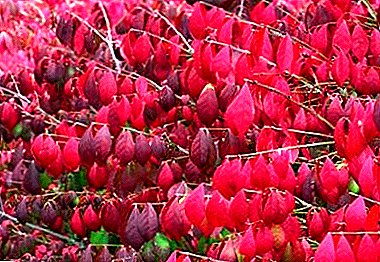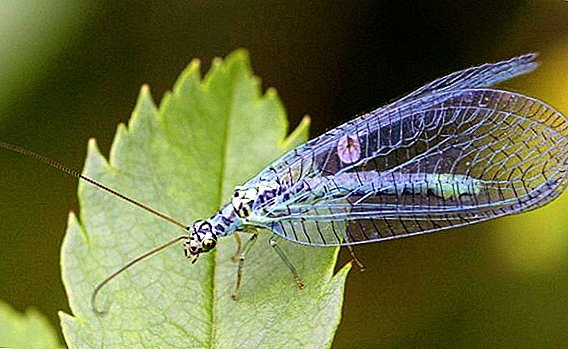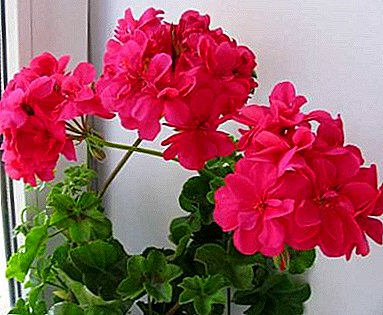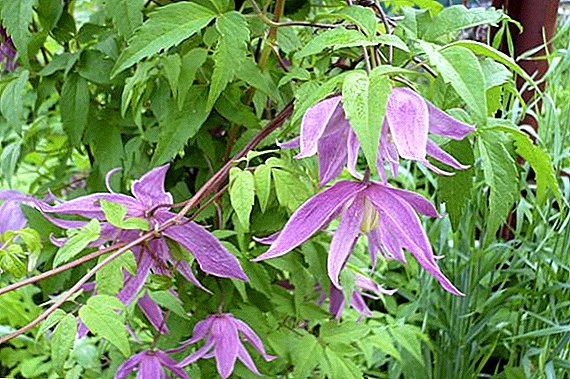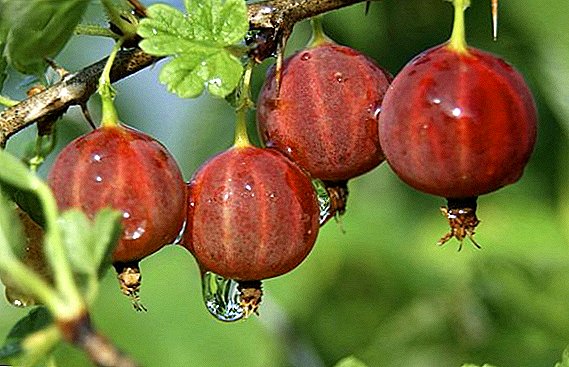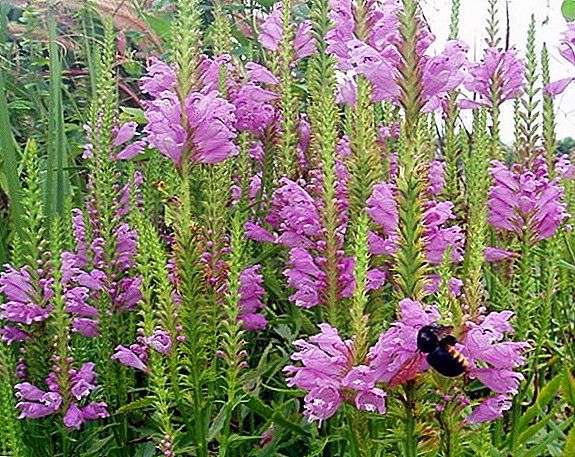 Many gardeners grow fizostegiyu in the role of perennial, as this plant is not only beautiful, but also quite unpretentious. In this article we will consider what conditions are needed for this flower, how to plant and propagate the physical strategy correctly, and tell you about the rules of care.
Many gardeners grow fizostegiyu in the role of perennial, as this plant is not only beautiful, but also quite unpretentious. In this article we will consider what conditions are needed for this flower, how to plant and propagate the physical strategy correctly, and tell you about the rules of care.
Botanical characteristic
Traditionally we begin with the botanical characteristics of the plant.
Physiotherapy - perennial herbaceous plant, which belongs to the family Gubotsvetnyh. The birthplace of the flower is North America, where the flower is common in all states except Florida. The genus includes only three species, which are used by gardeners for landscaping flower beds and summer cottages.
Physostegy has a straight stem, oblong or lanceolate leaves. Perennial grows up to 90 cm. The bud is presented in the form of a large spike-shaped inflorescence. The habitual colors of the inflorescences are white and pink (fizostegiya virginskaya), purple, lilac.
The best place to grow
Before planting, you need to choose a good place where the perennial will feel best. Therefore, below we will select the ideal place for physical therapy in your garden or in a flower bed.
Lighting
The physiotherapy can be planted both in the open sun and in partial shade. However, many gardeners note that a plant planted in partial shade quickly degenerates for no apparent reason, so it is better to place the perennial in an open place in direct sunlight.
It is worth remembering that the plant planted in the shade will be weak and will not be able to surprise you with luxurious flowering, so you should not plant a flower under tall trees with a thick crown.
Soil requirements
Unlike many cultivated plants that love sandy soil, physical strategy prefers soils that retain moisture, because in nature the flower greens the banks of rivers, lakes and marshes. It is also worth noting that the plant, although undemanding to the composition of the soil, however, the fertile substrate (black soil) will be in priority. Planting fizostegiyu on poor soils should not be, because the flower does not have enough nutrients to build a green mass.
In the event that sandy soils predominate in your garden, which practically do not trap moisture, you should water the soil more often, keeping it moist. 
Important! In the dry land, fizostegiya quickly dies.
Features landing fizostegii
Consider some of the features of landing fizostegii that will help accurately determine its place in the composition. Let's talk about the "good" and "bad" neighbors.
Best neighbors
The problem of this plant is that its root system, feeling "freedom", begins to capture the maximum amount of territory. As a result, it turns out that all the flowers disappear from the flowerbed and only the winner remains - physical strategy.
This happens for the reason that the rhizome of perennial grows very quickly, drowning and destroying any other weaker cultivated plants. It is for this reason that other perennials should be planted next to the flower, which can "repel" the aggressor.
These plants include:
- phlox;
- Echinacea purpurea;
- Virginia tradescantia;
- astilba;
- meadowsweet;
- lily;
- lupine;
- decorative cereals.

Seed planting
Physiostegy is different in that the planting of young plants can be carried out both with the help of seeds and the division of the mother bush. However, in view of the extreme difficulty of growing a flower from seed, vegetative reproduction is most often used.
If you have a lot of free time or have a desire to try your hand at this difficult task, then we will discuss the option of planting physical physics.
After ripening, the seeds of a fizostegiya can be planted in a flowerbed, and if negative factors are excluded, you can see how young flowers sprout next spring. Following the above, we can conclude that perennial enough to sow in the open ground to get an increase and plant physiology in other areas or flower beds. Seeds have good germination, so they, indeed, can be sown immediately after harvest.
Physiotegia is also sown in special boxes and grown in greenhouses to produce strong seedlings. Conditions "standard", as for any other not too demanding seedlings: regular soil moistening, protection from drafts and sudden temperature changes, a sufficient amount of light and heat. 
Important! Young seedlings are vulnerable to direct sunlight.You can dive seedlings immediately after the plants appear 2 true leaves. 15 days before the picking, the seedlings should be hardened by lowering the temperature, removing the protective film and watering with less warm water.
Physostegia grown from seeds is no different from the parent plant. Species or varietal differences will not be lost.
Vegetative reproduction
Vegetative reproduction is used more often. A new plant can be obtained from both rooted cuttings and rhizome division.
- Reproduction by layering. To do this, take the generated otvodka fizostegii and cut out with a small piece of rhizome. Next, the layers are planted in a shaded place, so that it does not immediately go to growth (if you need to wait for the time before disembarking to a permanent place). If there is already room for a young plant, then immediately land in the sun or in partial shade. Layer very quickly take root and goes into rapid growth. The separation of the layers is best done at the end of the summer, at a time when the ground will be sufficiently wet, but not too wet.
- Reproduction rhizome. Before flowering or at the end of summer, we separate the middle part of the rhizome and transfer it to a new location. Before transplanting the whole green part needs to be cut. No additional actions need to be carried out, as long as the roots are healthy and intact.
 Reproduction is possible by cutting, but this method does not increase the survival rate of a young plant, but there are plenty of problems with correct cutting and germinating the cutting.
Reproduction is possible by cutting, but this method does not increase the survival rate of a young plant, but there are plenty of problems with correct cutting and germinating the cutting.Did you know? All the beauty of the inflorescences of fizostegiya shows only 3 years after planting. After that, the bloom will remain at the same level for another 2 years, and then it will decline if the flower is not transplanted.
Care rules
After planting in an open area in the appropriate substrate, physiotherapy requires proper care, which will not allow the flower to turn into a chaotic overgrown bush, affected by various diseases and pests.
Watering
As mentioned above, the perennial not only loves moisture, but loves it to always remain in the ground. That is, either you need to plant the plant in the appropriate soil, or carry out regular watering and prevent the substrate from drying out.
Watering is necessary systematically, while it is important to remember that an excess of moisture will lead to rotting of the roots. This will happen even if the rhizome is very strong and stretches for several meters under the ground.
In order not to bother you all the time, you can organize a drip irrigation system from plastic bottles, or automatic drip irrigation.
Soil care
The soil must be systematically loosened so that the root system receives the right amount of oxygen. If you do not have the time or desire to carry out this action, the soil can be thrashed with sawdust, grass, straw or peat. Such a shelter will protect the ground from drying out, and with it you will get rid of the hated weeds. 
Fertilizers and fertilizing herbaceous plants
Since physical therapy is a perennial, it means that it will grow in the same place for more than one year. From this it follows that the soil will gradually be depleted, so it is not possible to do without additional fertilizer.
It is necessary to feed a flower only 2-3 times per season with complex fertilizers that are applied under the root. It should be careful with increased doses of nitrogen, as they negatively affect the general condition of the perennial.
You can use drugs such as Crystal, Akvarin, Kemira, Plantafol.Humus makes sense to close up only if the soil is too poor, and you are sure that the flower suffers from this. At the same time, dressing with humus does not replace making “mineral water”, which is worth remembering.
How to prepare perennial for winter
As soon as it goes in winter, fizostegiyu need to be cut so that there is no green part left on the flowerbed (leave no more than 5 cm above the ground), which can freeze and lead to the complete death of the plant. After cutting, if you expect a harsh or snowless winter, you can cover the flower with the same mulch that you laid earlier to protect against weeds and temperature fluctuations. Only in this case, you need to use a layer of mulch at least 10-15 cm, otherwise the roots will be frozen. 
Did you know? The inflorescences of fizostegii cut into bouquets, using asparagus in tandem with sprigs.
The main diseases and pests of physiotherapy
The only thing that fizostegiya is afraid of is aphid. The invasion of this parasite does not bypass the plant, resistant to diseases and pests. Therefore, as soon as you notice small black flies on the stem and leaves of the plant, treat the plants with an insecticide.
Important! It is necessary to process not only fizostegiyu, but also other cultural plants in the garden, which can spread aphid.In the event that you overdo it with watering, there can be some fungal disease due to high humidity. In order not to torture yourself or the plant, treat the planting with a fungicide and temporarily reduce watering to reduce humidity.
Physostegy boasts immunity to many diseases and pests. Plant the flower wisely so that it decorates your garden and at the same time does not destroy other less resistant ornamental plants.


